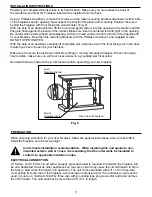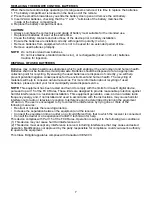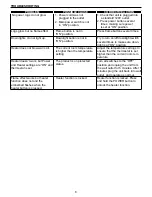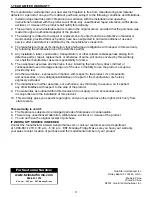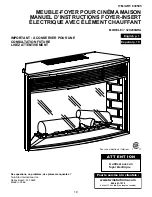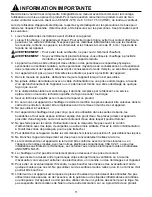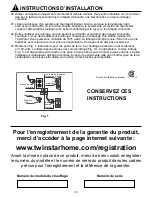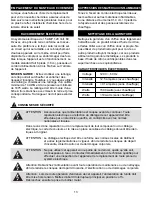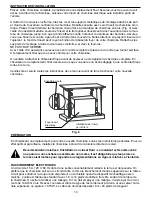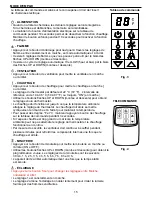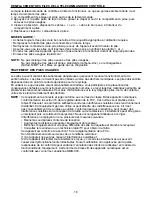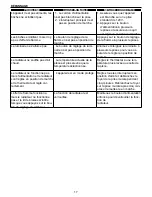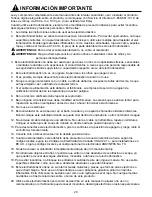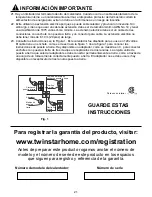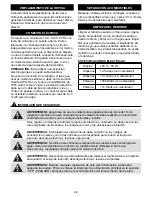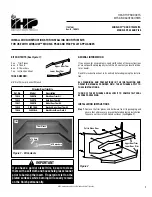
7
REPLACING THE REMOTE CONTROL BATTERIES
When the remote control stops operating or its range seems reduced, it is time to replace the batteries.
1. The battery compartment is located on the back end of the remote.
2. Press the small tab inwards as you slide the battery door open and remove the old battery.
3. Insert 2 AAA batteries, checking that the “+” and “-” terminals of the battery matches the
inside of the battery compartment.
4. Replace the battery compartment door.
DISPOSAL OF USED BATTERIES
CAUTION:
• Always purchase the correct size and grade of battery most suitable for the intended use.
• Replace all batteries of a set at the same time.
• Clean the battery contacts and also those of the device prior to battery installation.
• Ensure the batteries are installed correctly with regard to polarity (+ and -).
• Remove batteries from equipment which is not to be used for an extended period of time.
• Remove used batteries promptly.
NOTE
: Do not mix old and new batteries.
Do not mix alkaline, standard (carbon zinc), or rechargeable (nicad, nimh, etc) batteries.
Caution for ingestion.
Batteries may contain hazardous substances which could endanger the environment and human health.
Batteries shall not be treated as municipal waste. Batteries should be disposed of at an appropriate
collection point for recycling. By ensuring the used batteries are disposed of correctly, you will help
prevent potential negative consequences for the environment and human health. The recycling of
materials will help to conserve natural resources. For more information about recycling of used
batteries, please contact your local municipality waste disposal service.
NOTE
: This equipment has been tested and found to comply with the limits for Class B digital device,
pursuant to part 15 of the FCC Rules. These limits are designed to provide reasonable protection against
harmful interference in a residential installation. This equipment generates, uses, and can radiate radio
frequency energy and, if not installed and used in accordance with the instructions, may cause harmful
interference to radio or television reception. Interference can be determined by turning the equipment
off and on. The user is encouraged to try to correct the interference by trying one or more of the
following measures:
• Reorient or relocate the receiving antenna.
• Increase the separation between the equipment and the receiver.
• Connect the equipment into an outlet on a circuit different from that to which the receiver is connected.
• Consult the dealer or an experienced radio/TV technician for help.
This device complies with Part 15 of the FCC Rules. Operation is subject to the following two conditions:
(1) This device may not cause harmful interference and
(2) This device must accept any interference received, including interference that may cause undesired
operation. Modifications not approved by the party responsible for compliance could void user’s authority
to operate the equipment.
This Class B digital apparatus complies with Canadian ICES-003.






